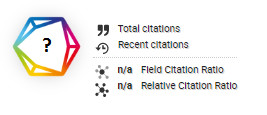Crowdfunding as an Alternative to Property Development Financing in Disaster Management
DOI:
https://doi.org/10.46984/sebatik.v28i2.1681Keywords:
Crowdfunding, Disaster Management, Alternative Social FinanceAbstract
Crowdfunding is a collective fundraising process where a large number of people contribute funds to support a specific project, product, service, or cause. It utilizes digital platforms to connect fundraisers with funders, enabling the collection and distribution of funds in line with the advancements of the Industry 4.0 era. In particular, crowdfunding for natural disasters has proven to be an effective tool for raising funds to support post-disaster recovery efforts through social initiatives. This innovative approach has shifted societal behavior from being primarily consumptive to more productive, making it easier for donors to connect with meaningful and noble causes. Indonesia ranks as the most generous country in the 2024 World Giving Index, highlighting its strong culture of giving. This research aims to analyze whether crowdfunding can serve as an alternative funding mechanism for property development in disaster management and to identify its opportunities as an innovative and inclusive funding solution. The research methodology includes descriptive and literature studies. The findings conclude that crowdfunding holds significant potential as a social financing alternative for property development in disaster-affected areas. Moreover, it provides a platform for community engagement, enabling active participation in the post-disaster rehabilitation and reconstruction process through crowdfunding schemes.
References
Alfial, A. M., Indrajid, A. N., & Wisudanto, W. (2024). Donation Based Crowdfunding untuk Pendanaan Anak Putus Sekolah. Co-Value Jurnal Ekonomi Koperasi dan kewirausahaan, 14(11).
Nusron, L. A., Wahidiyah, M., & Budiarto, D. S. (2018). Antecedent factors of financial management behavior: An empirical research based on education. KnE Social Sciences, 437-445.
Aren, S., & Aydemir, S. D. (2015). The moderation of financial literacy on the relationship between individual factors and risky investment intention. International Business Research, 8(6), 17.
Baltas, K., Fiordelisi, F., & Mare, D. S. (2022). Alternative finance after natural disasters. British Journal of Management, 33(1), 117-137.
Berawi, M. A., Radjilun, M. K. Z., & Sari, M. (2020, October). Developing Blockchain-Based Crowdfunding Model for Property Investment. In International Scientific Conference on Innovations in Digital Economy (pp. 23-39).
Colombo, M. G., Franzoni, C., & Rossi‐Lamastra, C. (2015). Internal social capital and the attraction of early contributions in Crowdfunding. Entrepreneurship Theory and Practice, 39(1), 75-100
Deloitte (2013), European Crowdfunding Network (ECN), Review of Crowdfunding Regulation. Sydney: Deloitte.
Hemer, J. (2011). A snapshot on Crowdfunding. Working papers firms and region.
Hobbs, J., Grigore, G., & Molesworth, M. (2016). Success in the management of Crowdfunding projects in the creative industries. Internet Research, 26(1), 146–166. https://doi.org/10.1108/IntR-08-2014-0202
John H. Vogel Jr. & Benjamin S. Moll (2014). Crowdfunding for Real Estate. The Real Estate Finance Journal, 2014
Lin, N. (2017). Building a network theory of social capital. Social capital, 3-28.
Massolution. (2012). Crowdfunding industry report: Market trends, composition and Crowdfunding platform
Mollick, E. (2014). The dynamics of Crowdfunding: An exploratory study. Journal of business venturing, 29(1), 1-16.
Rahmawati, D., Apriady, M. N., & Wisudanto, W. (2024). Crowdfunding Sebagai Alternatif Pembiayaan Usaha Mikro Kecil Dan Menengah (Umkm), Akibat Meningkatnya Jumlah Pelaku Umkm Di Indonesia. Sebatik, 28(1), 33-40.
Rowley, J., & Slack, F. (2004). Conducting a literature review. Management Research News, 27(6), 31-39..
Sholoiko, A. (2017). Financing losses from natural and man-made disasters by use of Crowdfunding. Investment Management & Financial Innovations, 14(2-1), 218-225.
Suryabrata, S. (2000). Metode penelitian. PT. Raja Grafindo Persada, Jakarta.
Svobodov, I. (2016). THE LEVEL OF RESEARCH CZECH CROWDFUNDING, 1769– 1776.
Wisudanto., & Arifin, S.R. (2017). CROWDFUNDING SEBAGAI ALTERNATIF PEMBIAYAAN PEMBANGUNAN INFRASTRUKTUR. Prosiding Simposium II – UNIID 2017
Wisudanto., & Arifin, S.R. (2017). Crowdfunding New Paradigm for Financing: Operational Pattern of Crowdfunding in Indonesia. Belum dipublikasikan
Downloads
Published
How to Cite
Issue
Section
License
Copyright (c) 2024 Narendro Bawono Cahyolaksono, Pramaditya Ardiyanto, Wisudanto Mas Soeroto

This work is licensed under a Creative Commons Attribution 4.0 International License.
Authors retain all their rights to the published works, such as (but not limited to) the following rights; Copyright and other proprietary rights relating to the article, such as patent rights, The right to use the substance of the article in own future works, including lectures and books, The right to reproduce the article for own purposes, The right to self-archive the article








